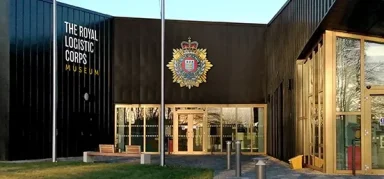Incident Management Matters
An irregular blog with thoughts and challenges on all aspects of Crisis Management, Emergency Preparedness & Response, Incident Risk and anything else that comes to mind.


Piano Movers and Piano Players
Over the summer I visited the Museum of the Royal Logistical Corps here in Winchester. The UK Army’s Royal Logistical Corps (RLC) are the professional logisticians keeping the army marching, its helicopters flying, its vehicles moving and its tanks and guns firing. They enable its deployment and supply it with everything it needs, wherever it operates.
We saw what happens when logistics are not properly in place, I guess, with Putin’s initial incursion into Ukraine in 2022. Russian transport columns with multiple broken-down vehicles, bogged in mud, running out of fuel and its troops going hungry outside Kyiv.
Logistics is foundational to incident response and we need to give it the importance in our planning that it deserves.
More, more, more
Post Macondo the suite of resources available to a Responsible Party in the event of a spill have increased exponentially.
We see in other fields too, that the amount of specialist equipment, systems and subject matter experts that we may wish to deploy to any incident is increasing as are stakeholders expectations on deployment times
The diversity and volume of resources that we expect to deploy and sustain in the field is larger than it has ever been.
Despite this, logistics plans are often no different today than they were 10 or even 20 years ago. They frequently merit no more than a para graph or two in an overall incident management plan. There sometimes seems to be a view from many that given enough money, any logistics issue can be resolved.
Some things money just can't buy
Money will not make an airport runway longer or apron space wider in the hours to days timescales of an emergency response. Nor will it make Vessels of Opportunity of the correct specifications appear in the waters near the incident.
What’s more, if the incident we are responding to came as a result of a natural disaster, local infrastructure will be compromised and priority, quite rightly, will be given to humanitarian relief efforts.
So how do we make sure that we are logistically able to deliver on our oil spill contingency plans, source control intervention plans, and other incident management plans?
These beautifully-crafted plans are just waste paper unless we can implement them after all.
Making the hard yards
Recruiting professional logisticians is a good start, and drawing on veterans from the RLC was a great initiative for OSRL in my time there.
Post-Macondo I had OSRL develop a whole new “Major Mobilisation Plan” to give us structure and purpose as to how we mobilised the plethora of OSRL resources into field in the event of a major incident.
Most importantly, I insisted that we exercised this at least once a year with whilst I had the helm. These drills employed a team from our Members who gave a real-life edge to the exercise and brought with them injects that provided additional challenge.
We also put together an excellent awareness-raising workshop for the senior teams of our Member companies (with massive kudos to Dan White and David Nicholson for this). Getting senior leaders to realise just how challenging the ‘simple’ issue of moving resources from A to B may be was crucial in getting the right focus on the next step in the chain; Logistics Execution Plans.
Once your emergency plan(s) require significant resources to be deployed, then you really do need a dedicated LEP. Then, as with OSRL’s Major Mobilisation Plan, that LEP cannot then just sit and gather dust. It need to be vigorously exercised, using real-world, real-time data and with worst-case scenario injects such as airport closures thrown in to provide a real test.
We need your consent to load the translations
We use a third-party service to translate the website content that may collect data about your activity. Please review the details in the privacy policy and accept the service to view the translations.